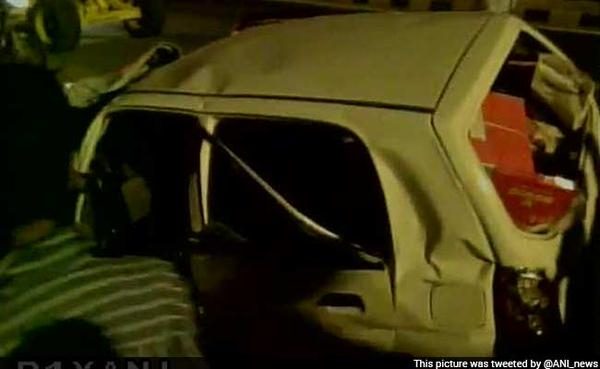
Road Crash in Western India puts spotlight on "unsafe behavior, unsafe roads and unsafe cars".
In the din and noise of a road crash in India’s western State of Rajasthan involving a film actress and the death of a child, the real issues are being forgotten – unsafe behavior, unsafe cars and unsafe roads – the deadly trio that keeps claiming lives on Indian roads. This, despite the Government’s stated commitment to road safety, especially after the death of the Union Minister, Gopinath Munde, in a car crash last year.
First, the issue of unsafe behaviour. None of the occupants in both cars involved in the crash in Dhausa district of the State – the high end Mercedes and the small car Alto -- were wearing seatbelts, a phenomenon which is quite common in India. Even the actress and BJP Member of Parliament who was seated in the back seat was not wearing a seat-belt, explaining why she was hurt on the forehead.
"Being common does not make it right. There is little awareness in India for proven effective interventions like seatbelt wearing, or child car seats," said Professor Rebecca Ivers, Director of the Injury Division of the George institute for Global Health, Sydney.
"While the number of road deaths in India has reached epidemic proportions, many of these deaths are preventable by simple measures, such as seat belts for car drivers and occupants.” adds Prof. Ivers.
Second, unsafe cars. The Global NCAP programme which tested four small cars from India in a crash worthiness test held in 2014 found that the Alto – the small car involved in the accident -- failed miserably to meet all parameters of frontal as well as side collision. The car does not have airbags which can protect the driver nor is it equipped with an anti-collision brake system.
"Though the Indian government has accepted UN standards of crash test worthiness and is planning to launch the facility from 2017, small car manufacturers must be encouraged to upgrade their safety features," says senior researcher at the George Institute, Dr Jagnoor. "We can’t continue to be onlookers as more and more small cars get involved in road crashes in India because of their unsafe features."
Car manufacturers argue that safety features add to the cost of the car, making it less affordable for the Indian market. The Transportation Research and Injury Prevention Programme (TRIPP) at the Indian Institute of Technology in Delhi did a survey of sale prices of all car models on the road in India in 2013 and found that a car buyer has to spend about Rs 100,000 or more extra to buy the same model vehicle with the safety options. However, the safety options come bundled with extra chrome, leather, expensive stereos and other trim. "The customer is being forced to buy unsafe cars since safety options are not available for their actual price." Prof. Dinesh Mohan concluded in the survey.
In the survey, the manufacturers' print and TV advertisements were also reviewed. To the surprise of the researchers, they found that while all manufacturers were advertising speed, acceleration and trim, none focused on safety features."It is time that we woke up to the fact that safety cannot be compromised for affordability," points out Dr Ivers "`We need a public campaign for road safety and the design and safety features of small cars has to be a part of it," she adds.
The third issue is one of unsafe roads. It is well known that road conditions in India do not support smooth travel of vehicles and the complexity of traffic add to the chaos. "Road conditions leading to such crashes, must be investigated promptly and the report made public to build political will for improved road design." Professor Ivers argues.
In the final analysis, the society must take collective responsibility for such accidents. Civil society groups, clinicians, the Government and research institutions must work together to ensure a culture of no fatalities, something that can be achieved only when everyone in India commits to the vision of "zero road deaths".


